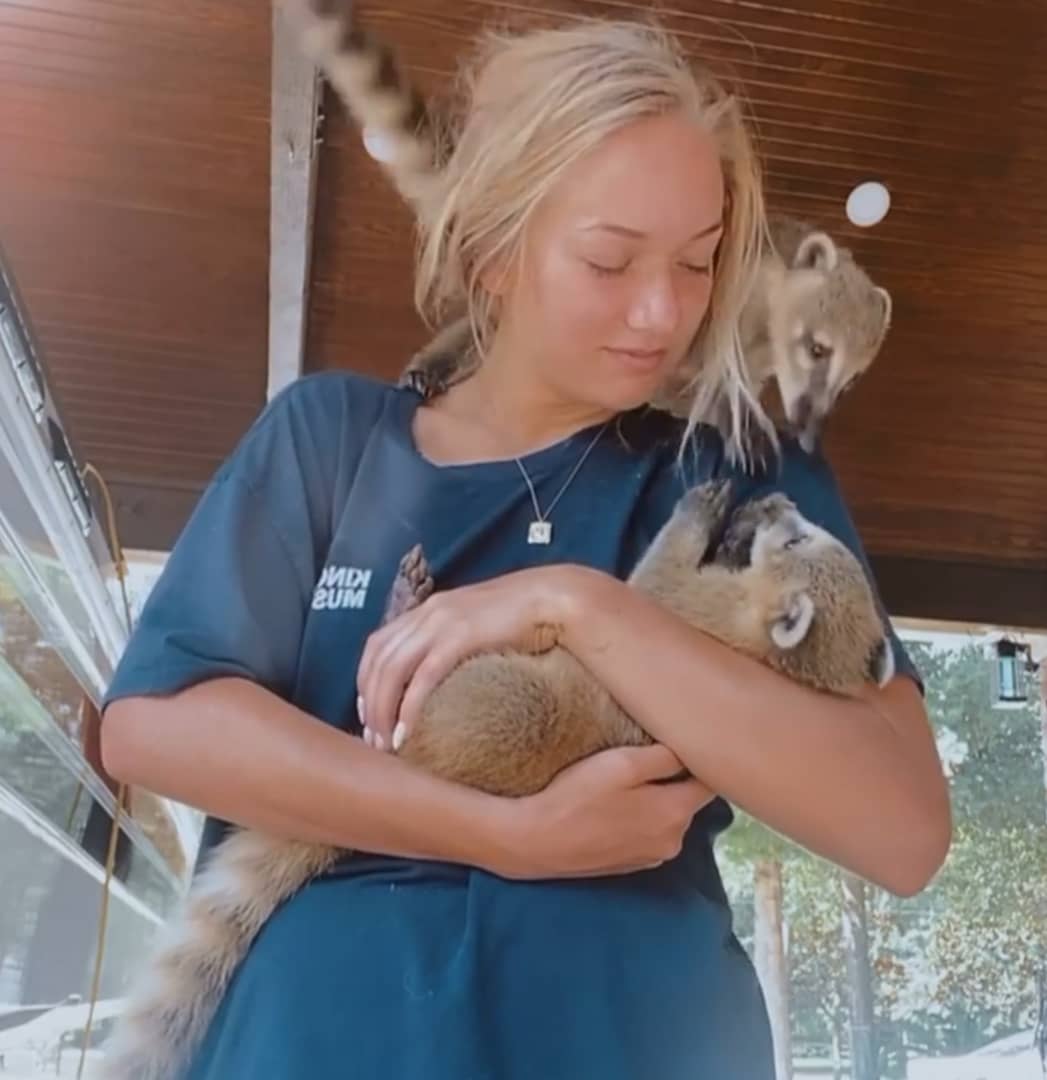Male Coatimundi For Sale Online
Male Coatimundi For Sale Online at a very good price and they are going to make a grate home in your family. Potty trained and loves to play with kids and The white-nosed Nasua narica (Nasuanarica), conjointly called coatimundi/koʊˌɑːtɨˈmʌndi/, may be a species of Nasua narica and a member of the mammal family . on the average most weigh between eight and twenty lbs. Males area unit larger. On average, the whole length is regarding three ½ foot., regarding 1/2 that being the tail length. a correct tail ought to build the sign of an issue mark once coatis area unit active, pixilated and curious. In the USA, the white-nosed Nasua narica (Nasuanarica) is especially found within the southeastern and southwestern corners of Arizona and American state, and in elements of Lone-Star State. Relatives of the raccoon, the dimensions of an enormous housecat, coatis have long tails, long noses and faces cloaked in white and black. They board matriarchal bands of up to forty animals and speak a language of grunts, chitters and churps. Babies build peeping appears like baby birds. Another marvelous issue regarding them is that they nearly no odor or smell in their fur. Coatimundi for sale near me,
What Part Of The World Are Coatis From?
Coatis are found in Latin America, from Northern Mexico to South America, however, in the last century coatis have roamed into the United States and now occupy parts of Arizona.
What Type Of Habitat Do Coatis Prefer?
Coatis primarily live in forested areas including deciduous, evergreen, rain forest, cloud forest, dry scrub forest habitats, and mountains. Due to human influence, coatis prefer secondary forests and forest edges. They are found up to 8,000 feet in elevation. Male Coatimundi For Sale Online
What Do Coatis Eat?
Primarily omnivorous, coatis usually forage for fruits and invertebrates. Coatis like to eat palms, eggs, larval beetles, scorpions, centipedes, spiders, ants, termites, lizards, small mammals, rodents, and carrion (dead animal) when it is available.
How Big Are Coatis?
Coatis usually weigh between 7 and 13 pounds with an average weight of about 10 pounds. On average coatis are about 41 inches long but can range in length from 28 to 53 inches. Males are generally larger than females.
What Interesting Adaptations Do Coatis Possess?
The long, black to brown tails of coatis with yellow rings are used for balance. Coatis have strong claws and forelimbs to climb and dig out food from under rotted logs. They can reverse the joints of the anklebone to descend trees headfirst.
How Does Reproduction Occur With Coatis?
Typically, one male coati is accepted into a band of females and juveniles near the beginning of the breeding season. The mating system is polygynous, with a single male mating with the females in the band.
Breeding season for coatis varies with location, and corresponds with the maximum availability of fruit. Breeding occurs between January and March in some locations, and between October and February in others. Males will join the loosely organized bands of females to mate. After mating, males leave the bands for a mostly solitary existence, and the females disperse and build tree nests for the remainder of gestation and birth. Females give birth to litters of 3 to 7 young 74 to 77 days after mating. Most births occur between April and June. Five to six weeks after birth, the females and their young will rejoin the band. Young are altricial and are therefore dependent on their mother for care and survival. By about 3 weeks of age, coatis are able to walk and at 4 months they can eat solid food. Females become sexually mature at 2 years of age, and males mature sexually around three years of age. World Organization for Animal Health (OIE),
What Is The Lifespan Of Coatis?
In the wild coats usually live to be about 7 or 8 years old. The longest known lifespan for a coati in captivity was just short of 18 years.
What Are Some Coati Behaviors?
Male coatis are normally philopatric (the tendency of an individual to return to or stay in its home area) whereas the females disperse. Unrelated females and their young form bands with up to 30 individuals. Coatis are excellent climbers and swim well. They are diurnal and spend most of the day foraging for food. Although coatis are mostly terrestrial, they do sleep, mate, and give birth in trees. When disturbed, they descend from the tree and escape on the ground. Coatis have been known to enter human areas to rummage through garbage.
Do Coatis Have Any Predators?
Coatis have a wide variety of predators, particularily large cats including jaguars, pumas, ocelots, and jaguarundis, but large birds of prey and boa constrictors have been known to prey on coatis as well.
What Are The Ecosystem Roles Of Coatis?
Coatis help to control pest populations of insects and other invertebrates. They provide food to predators, and are likely important in dispersing some seeds.
Is There Anything Else Interesting About Coatis?
Experiments on captive coatis indicate cognitive skills of shape differentiation and shape recognition. Initially, confusion over solitary males led to designation of a separate species. Other common names are the ring-tailed coati, the brown-nosed coati, the southern coati, and the South American coati. Coatis are also referred to in some texts as coatimundis. The name coati or coatimundi is Tupian Indian in origin. The prefix “coati” means “belt”, and “Tim” means “nose” referring to the way the coatis tuck their noses under their bellies to sleep. The name Nasua is Latin for “nose”, possibly for the same reason.






Reviews
There are no reviews yet.